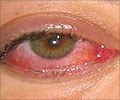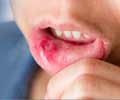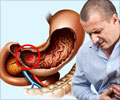
The Cincinnati Children's researchers developed a quality improvement initiative that has reduced pressure ulcers at the medical center by 50 percent. The study, including the improvement initiative, is published online in the journal Pediatrics. Details can be adopted by other hospitals wanting to reduce the incidence of pressure ulcers in their patients.
An unscientific survey taken at Cincinnati Children's prior to the study revealed a rate of pressure ulcers in children of at least 10 percent, more than twice as high as was thought to occur in pediatrics. Cincinnati Children's assembled a patient safety collaborative to investigate the problem. While more than 70 percent of pressure ulcers in adults occur due to pressure over bony parts of the body, researchers at Cincinnati Children's discovered that most pressure ulcers in children occur due to medical devices.
Cincinnati Children's established a quality improvement collaborative leadership that developed a quality improvement bundle of solutions, resulting in a 50 percent reduction in pressure ulcers in patients in the pediatric intensive care unit just one year after implementation.
"While this initial intervention has proved to be efficacious, we need to use established skin evaluation methods, identify early tissue changes, and test additional interventions to reduce harm from medical devices," says Dr. Visscher. "The unanticipated increase in pressure ulcers from pulse oximeters indicates that new products must be evaluated before widespread use."
Pressure ulcers aren't always serious, but even when they are not, they often serve as the "final straw" for families with sick children. These pressure ulcers are often the most visible signs of illness and can be an emotional tipping point. That's why pressure ulcer prevention has become a key part of providing family-centered care.
Advertisement
Moreover, Cincinnati Children's has established a Pediatric Advanced Wound and Skin Service that includes wound treatment throughout the medical center as well as academic research on skin and wound healing. Many current skin and wound products have little science behind them, but scientists at Cincinnati Children's are working to make new discoveries, some still at the basic science level, that they hope translate into new products in the coming years.
Advertisement
Source-Eurekalert








